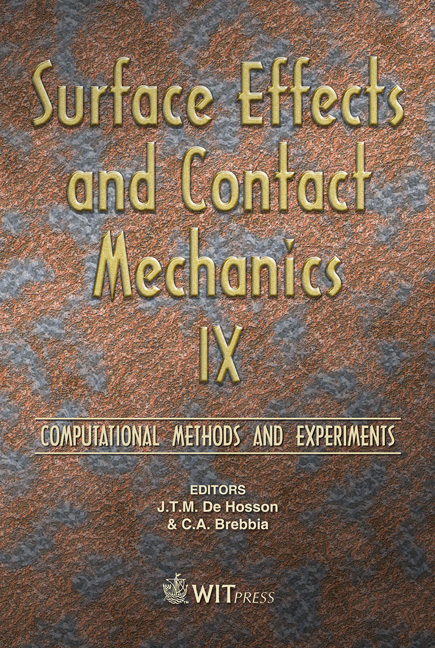The Effect Of Friction Stir Processing On The Fatigue Life Of MIG-Laser Hybrid Welded Joints As Compared To Conventional FSW 6082-T6 Aluminium Joints
Price
Free (open access)
Transaction
Volume
62
Pages
11
Page Range
183 - 193
Published
2009
Size
1,576 kb
Paper DOI
10.2495/SECM090171
Copyright
WIT Press
Author(s)
A. Els-Botes, D. G. Hattingh & K. V. Mjali
Abstract
From previous research, Friction Stir Processing (FSP) was identified as a unique processing method that could be applied to improve the microstructure of welded non-ferrous alloys. FSP is similar to Friction Stir Welding (FSW) in that the material is processed below the melting point of the material, but the emphasis is not to produce a joint as in the case of FSW, but to improve mechanical performance. The difference between the two processes is that FSP is used to improve an existing weld’s mechanical properties through microstructure refinement. This investigation was conducted on an aluminium alloy due to the relative difficulty with which defect free welds can be produced using conventional fusion welding processes. The aluminium alloy sections were joined using a MIG-laser hybrid process with varying gap widths between the adjoining plates. Similarly, a number of plates were also prepared using a conventional FSW process for comparative purposes. After fabrication, samples were sectioned from the welded plates for mechanical testing in order to evaluate the integrity of the welds. Mechanical properties were evaluated by tensile, fatigue and microhardness testing. Based on comparative results between the FSP MIG-laser hybrid (FSPMLH), the MIG-laser hybrid (MLH) and FSW for the three different gap widths evaluated, several general trends could be observed: weld efficiency (based on tensile strength) was the highest for the 0mm gap MIG-laser hybrid welded plates; FSP had a negligible effect on the tensile strength of the MIG-laser hybrid welded plates, but the percentage elongation values increased significantly. The effect of FSP on fatigue life became more noticeable as the width of the gap between adjoining plates increased. Microstructure evaluation revealed that FSP resulted in a refinement of the as-welded dendritic structure as well as eliminating porosity in the weld. Keywords: friction stir processing, friction stir welding, fatigue testing, weld integrity, aluminium alloy, MIG-laser hybrid welding.
Keywords
friction stir processing, friction stir welding, fatigue testing, weld integrity, aluminium alloy, MIG-laser hybrid welding





